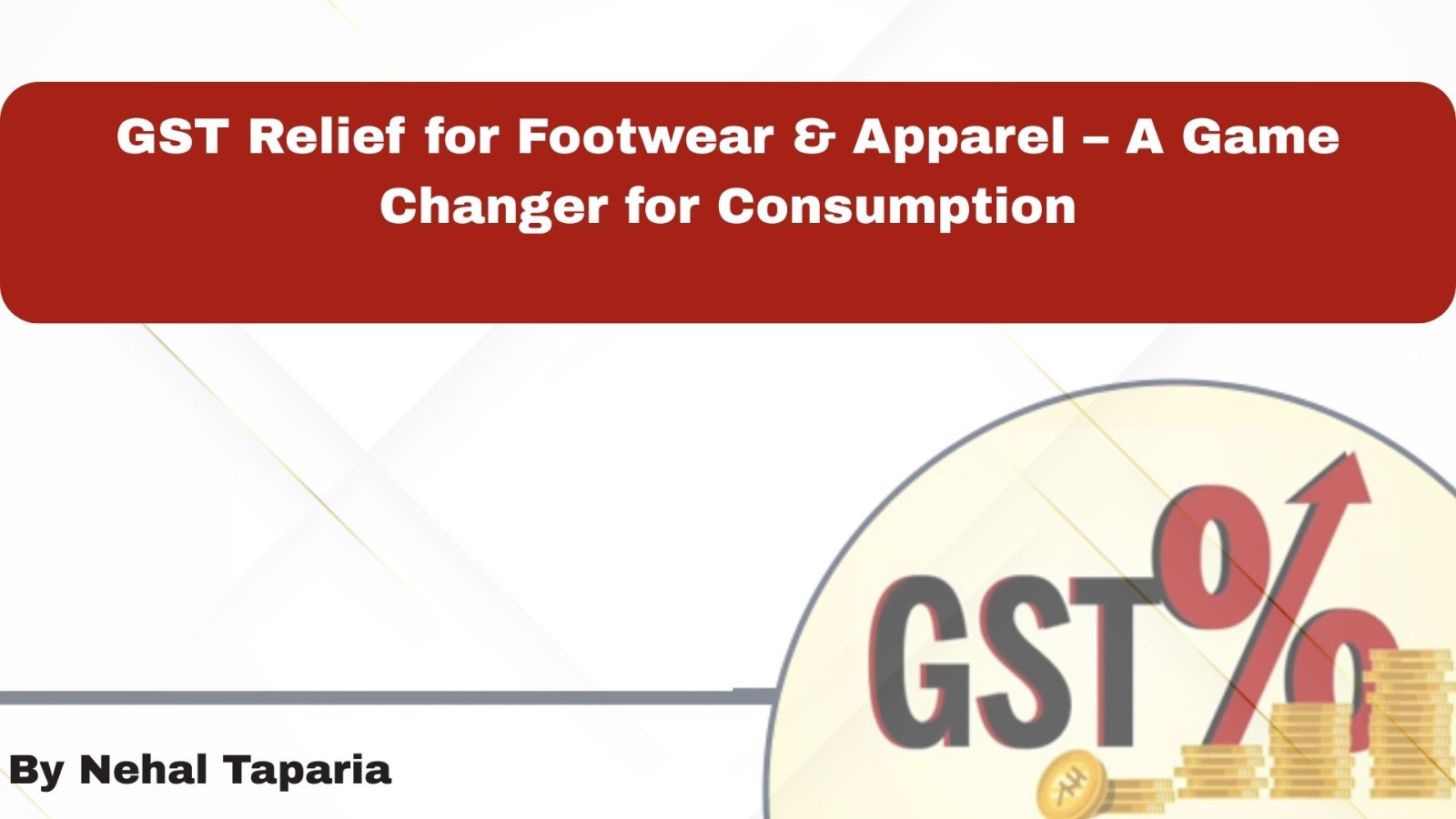GST Relief for Footwear & Apparel – A Game Changer for Consumption

GST Relief for Footwear & Apparel – A Game Changer for Consumption
What's Happening?
On 3rd September 2025, the GST Council reportedly approved a reduction in GST for footwear and apparel priced up to ₹2,500, bringing the rate down to 5%, up from the previous threshold of just ₹1,000. Alongside this, the Council is simplifying the GST structure by eliminating the 12% and 28% slabs, consolidating most items into 5% and 18% categories.
Market Impact: What It Means for Consumers, Retailers & Investors
- Consumer Spending Gets a Boost
Lower GST should translate into cheaper shoes and apparel, directly benefiting middle-income consumers—especially ahead of the festive season. - Retail & E-commerce Sectors Get a Lift
As affordability improves, expect stronger footfalls in brick-and-mortar stores and a spike in online demand for fashion & footwear. - Improved Margins for Domestic Brands
Companies like Bata and Metro Brands—with a large share of their products priced under ₹2,500—stand to gain from improved competitiveness and margins. - Wider Sentiment Boost for Consumer Industries
A broad-based relief across daily-use goods could lift retail sentiment, aiding sectoral leaders in FMCG, apparel, and consumer durables. - Rationing by Price Bands Could Hurt Premium Segment
While the tax cut helps lower-priced goods, there’s concern that raising GST on premium apparel (above ₹2,500) could dampen demand in that segment.
What This Means for the Indian Markets
- Consumption Stocks: Expect a positive re-rating in mid-tier apparel and footwear companies.
- Retail & Mall Space: Higher footfall and sales growth could support realty segments tied to fashion outlets.
- GST Momentum Across Sectors: If similar cuts impact FMCG and durables, broader market sentiment could get a strong cyclical boost.
Bottom Line
This GST cut is a welcome move for budget-conscious consumers and mid-market retailers. It could revitalize demand just as the festive shopping season begins. While market sentiment is likely to improve for consumption-linked sectors, there is a caveat—premium segments may face headwinds if taxed more heavily.
By Nehal Taparia
This content is for educational and knowledge purposes only and should not be considered as investment or Trading advice. Please consult a certified financial advisor before making any investment or Trading decisions.
Our Recent FAQS
Frequently Asked Question &
Answers Here
What exactly changed?
GST on footwear and apparel priced up to ₹2,500 has been cut to 5%, raising the previous ₹1,000 threshold. The 12% and 28% slabs are being merged into two: 5% and 18%.
Who stands to benefit the most?
Could this move hurt anyone?
How will this impact consumption broadly?
Is this part of a broader reform?
What about market sentiment?
Copyright © By Empirical F&M Academy. Design & Developed by Techno Duniya


.jpg)


.jpeg)




